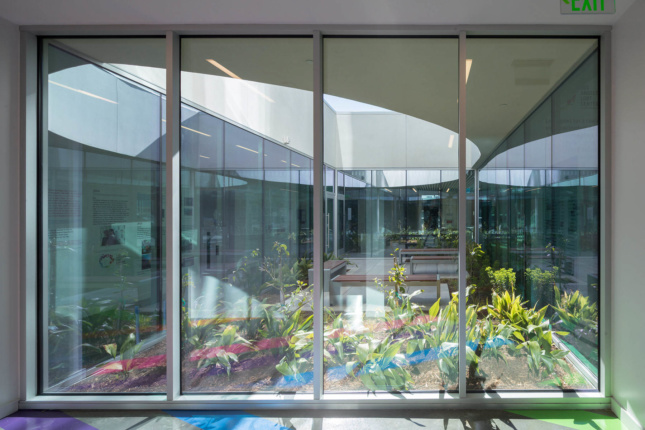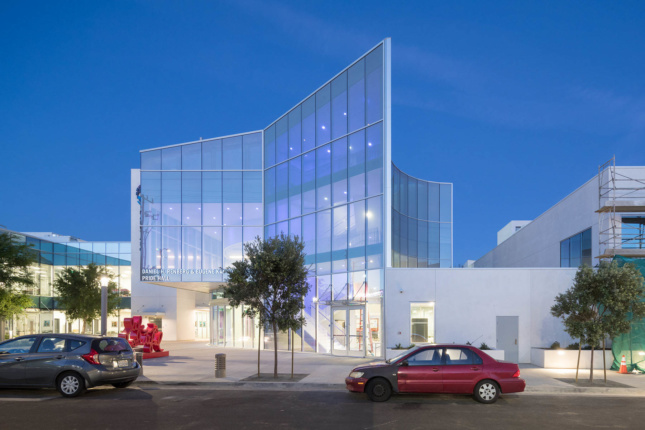In recognition of the many services it has provided for its community for 50 years, the Los Angeles LGBT Center recently opened a brand new campus that was designed to stand out in May of this year. The Anita May Rosenstein Campus was collaboratively designed by Leong Leong and Killefer Flammang Architects to provide courses, space, and amenities for an estimated 42,000 lesbian, gay, bisexual, transgender and questioning youths and seniors in Los Angeles each month.
The 183,000-square-foot campus offers many much-needed programs for the local LGBTQ community, including youth, senior and drop-in centers, a youth academy and a homeless shelter for up to 100 people. The campus is sited on a relatively quiet intersection at Santa Monica Boulevard and North McCadden Place in Hollywood, built across the street from The Village at Ed Gould Plaza, another facility owned by the Los Angeles LGBT Center which houses a theater, offices, art galleries and community meeting spaces.

The campus’s 12 programs were formally separated from one another across the four-acre site to create the visual complexity and porosity of a typical college campus. “Inspired by the mission of the Center,” said Dominic Leong, one of the partners of Leong Leong, “the architecture is a cohesive mosaic of identities and programs rather than a singular iconic gesture.”
The rounded edges, fritted glass, and cylindrical skylights are all nods to the circular logo for the Los Angeles LGBT Center, while lending the campus the added benefit of proudly standing out among its boxy neighbors. “The Center’s leaders gave KFA and Leong Leong a clear vision: that the design of the new Anita May Rosenstein Campus must reflect the boldness, optimism, and absolute certainty of the Center’s mission to care for, champion, and celebrate LGBT individuals and families,” said Barbara Flammang, one of the partners of Killefer Flammang Architects. “We hope that the design and formal expression of these buildings and open, landscaped spaces contribute to the flourishing of the people who live in, work at, and visit this wonderful place.” Boldness and openness are apparent design intentions even at night, when the edges of the building’s exterior are highlighted in purple neon, and one can see from the street that even some of the interior spaces appear thick with a purple haze.

The layout of many of the building’s living spaces is reflective of many of the gestures prevalent in the coliving spaces being built today, such as WeLive and Second Home. The communal kitchen and main activity room, for instance, can appear as a single large room when the large sliding doors between them are held open, while the lightness and transparency of the design throughout encourages interaction among its clients and staff.
Though the campus is now open and has already begun serving its community, the completion of its second phase remains highly anticipated. Expected to be completed early next year, Phase II will include 98 units for seniors and 25 apartments for younger tenants. The intergenerational nature of the campus was intended to spur the commingling of its diverse clientele.











